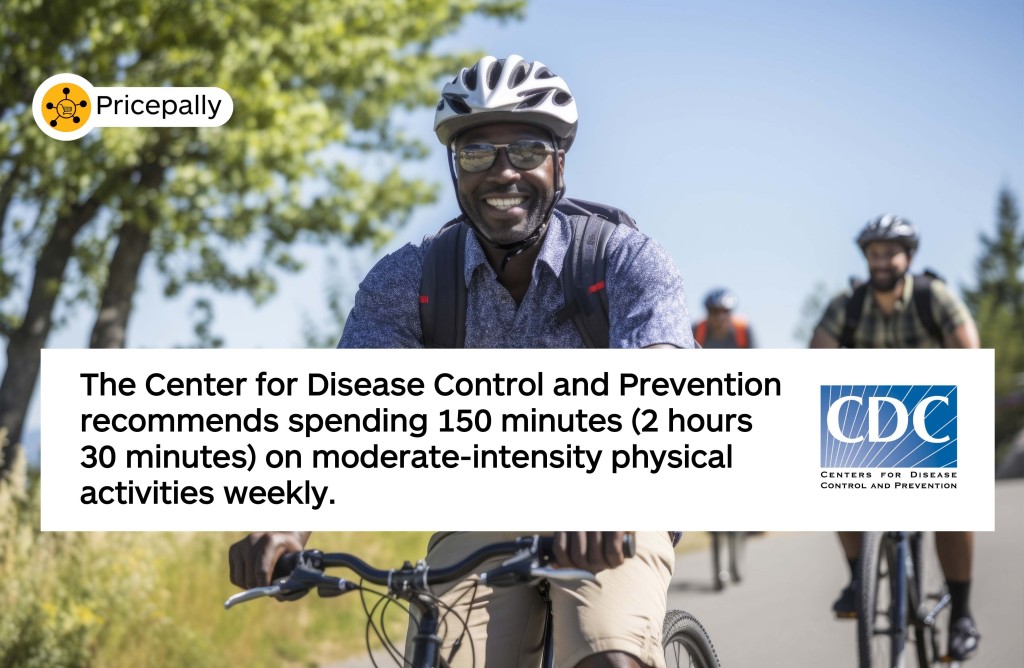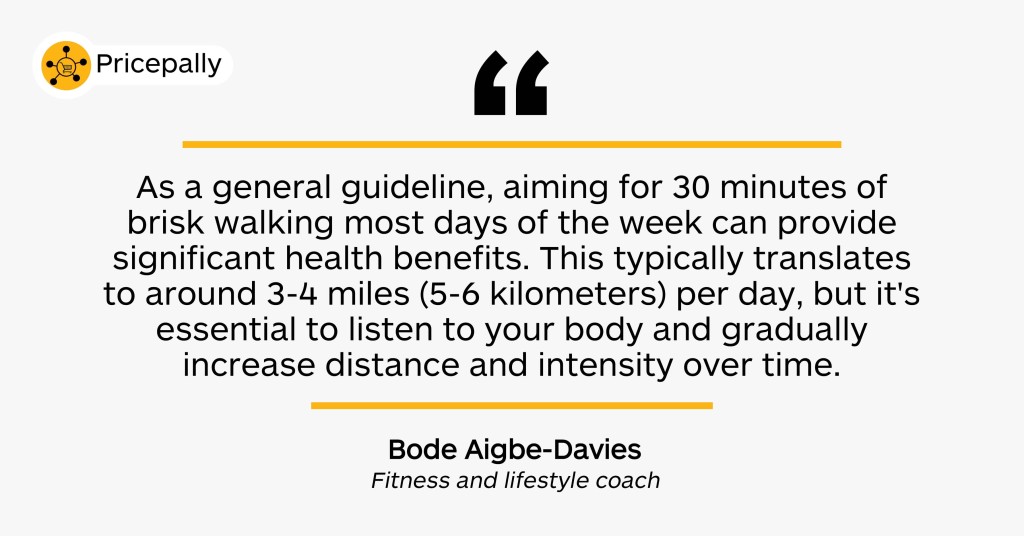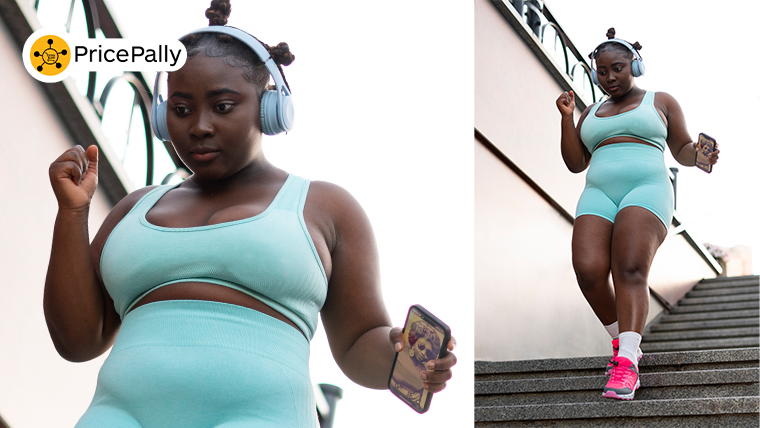I put on some unwanted weight at the end of 2023 (blame working from home 🙃), forcing me to hit the gym in 2024. My efforts were futile because all the gyms around me didn’t fit my budget.
That reality left me with two options: live an exercise-starved life or pick an alternative way to lose weight and stay fit. I chose the latter, which is walking. If you’ve written off walking for weight loss, I’ll give you reasons to reconsider your stance as I answer the million-dollar question: can you lose weight by walking?
The points you should note are:
How does walking cause weight loss?
Walking is a moderate-intensity, low-impact workout that ensures you lose more calories than you consume—the ultimate recipe for losing weight and shedding body fat. In 2019, people who walked 25 minutes twice every day for six weeks experienced fat reduction and significant weight loss.
Walking also helps you lose belly fat. The fat lies below the abdominal wall and may cause heart-related disease, dementia, type 2 diabetes, and breast cancer. However, the rhythmic and repetitive physical movement walking generates reduced waist circumference and preserves muscle mass, leading to belly fat shrinkage. In 2014, obese women who walked for 50-70 minutes daily for 3 days a week across 12 weeks burned more belly and body fat compared to those who lived a sedentary lifestyle.
How fast will you burn calories when you start walking for weight loss?
Age, sex, weight, walking intensity and duration, and exercise history influence the calories you need to shed. However, on average, walking 1.6km (or 2,000 steps) takes off 90-100 calories. Using this metric, 10,000 daily steps can help you lose 3,500 calories (10 pounds) in ten weeks.

Exercise tip: The Center for Disease Control and Prevention recommends spending 150 minutes (2 hours 30 minutes) on moderate-intensity physical activities weekly. On average, 10,000 steps take one hour and 40 minutes, depending on your walking speed and stride length. Therefore, walking 10,000 steps for at least three days per week helps you reach the recommended fitness goal.
Tips for walking for weight loss
You don’t need special sports skills or gym memberships to start walking, at least for a start. But if you want to stay consistent with your walking routine for effective weight loss, follow the tips below.
- Join a walking group
Walking, like every form of exercise, requires consistency and dedication. A walking group provides the accountability and mental motivation you need to stay grounded on your walk goals. Nutrition expert, Olajumoke Osunsanya of Khairo Diet, recommends walking with a friend or taking a walk with your family – spouse and kids. Asides from drawing motivation, these walking moments can also be a good time to bond over light conversations.
- Make walking fun
We know you’re eager to complete your daily steps, but walking can be incredibly boring and tiring. That’s why fun elements, like walking with your pet and listening to music, can make walking less tedious.
- Track your steps
Progress reports help you measure the effectiveness of your walk form and duration. Smartwatches, health apps (e.g., Google Fit), and pedometers or calorie calculators are tracking devices and mobile apps for tracking exercise routines.
For example, Google Fit, which I use to track my workout routines, uses the World Health Organization (WHO) heart rate standard as the benchmark for tracking heart rate. Additionally, the app lets you set weight and height measurements, step goals, and daily heart rate goals. These datasets help you track the impact of your exercise routines.
The calorie calculator estimates the energy you’ll burn based on your walking pace, weight, and walking duration. Note that they’re estimated figures and the result shouldn’t stop you from consulting a fitness professional.
Fitness and lifestyle coach, Bode Agbe-Davies, recommends tracking by journaling. “Keeping a workout journal or using fitness apps can help you record your workouts, set goals, and track your progress. Celebrate your achievements along the way, whether it’s reaching a new distance milestone or consistently meeting your daily step goal,” she says.
- Set a reasonable step goal
While discussing how walking helps weight loss, you learned that walking 10,000 steps daily helps you reach the weekly physical activity quota. That sentiment is still valid: walking 10,000 steps improves mood distress and depression, besides reducing waist circumference, body mass index (BMI), and body weight.
Despite the health benefits of walking long steps, don’t set a walk goal you’ll struggle to maintain. Instead, start with a reasonable goal you can fulfill every day and gradually increase your steps as your strength and perseverance improve. Your “walk goal” is to build consistency, especially if you’re a starter.
Bode Aigbe-Davies advices, “As a general guideline, aiming for 30 minutes of brisk walking most days of the week can provide significant health benefits. This typically translates to around 3-4 miles (5-6 kilometers) per day, but you should listen to your body and gradually increase distance and intensity over time.
“For busy individuals who cannot block out 30 minutes at a go, it can be spread throughout the day for example, 10 minutes in the morning, 10 minutes in the afternoon and another 10 minutes at night,” the fitness coach concludes.


Using this approach, prioritize multiple short walks per day. It helps you maintain your daily exercise routine while having the same effect as a long walking routine.
- Build intensity
The fat-burning zone explains the type of fuel your body burns during exercise. Your body uses fat molecules for energy during low-intensity walking, such as strolling, at a slower heart rate (57%–63% range). At this intensity, you’ll burn a few calories.
At higher walking speeds, your body turns to carbohydrates (glycogen) for energy to keep up with the increasing heart rate. As your heart rate increases during walking, the more carbs (calories) your body burns, and the more you lose unhealthy weight.
Walking tip: At high-intensity walking speeds, your breathing rate will increase but you can still complete sentences.
Walking up hills is a practical way to increase walking speed and intensity. Likewise, resistance training routines (e.g., squats, pushups, and squat thrusts) increase heart rate, muscle mass, and high-calorie loss.
- Pay attention to your gait and posture
The position of your body when sitting or standing relative to your head, shoulders, and hips is your posture. Gait, on the other hand, is your walking pattern. Both of these factors impact walking speed and breathing rate. For instance, looking ahead (not slouching your head or arching your back) lengthens strides.
Here are some practical tips to improve your gait and posture while walking:
- Maintain a straight position: keep your head level and avoid looking down at your feet. Ensure your chin is slightly lifted.
- Keep your spine, shoulders, and eyes steady: Avoid bending your spine—keep it neutral. Relax your shoulders and keep them back. For balance and awareness, always look forward, focusing 20 feet ahead.
- Tighten your core muscles (the muscles around your ribs, pelvis, and torso) by pulling your stomach in slightly. Likewise, keep your pelvis neutral, not tilting forward or back while walking.
- Strike with your heels first while walking. Don’t drag your feet. Take moderate strides and push off with your back leg for better propulsion.
- Start with a comfortable pace and gradually increase your speed. Wear supportive shoes and avoid worn-out footwear. Swing your arms naturally back and forth from your shoulders, not elbows. Keep your arms at your side, not across your body.
Weight loss by walking: Should I eat before (or after) walking?
Generally, you don’t need specialized pre-meals for walking (or any low-intensity exercise) that take less than one hour. Your weight goals won’t suffer whether you fast or eat before short-duration aerobic exercises like walking.
On eating, Olajumoke Osunsanya, Lead Dietician at Khairo Diet Clinic says, “It is advisable to eat before taking a walk to build stamina and may also improve digestion. Avoid the following foods before taking a walk: dairy, soda, fried foods, processed foods, and heavy foods.”
Should you decide to eat before walking, possibly because you intend to walk for more than one hour, prioritize the following food classes:
- Carbohydrates
- Proteins
- Fruits
The duration of walking isn’t the only factor you should consider. Health status, age, external factors (e.g., weather), and timing of exercise also affect your meal plans for walking. For instance, diabetics on insulin or other medications must plan their meal and exercise routines based on their blood glucose level with guidance from the appropriate health experts.
You don’t necessarily need post-recovery delicacies for short-duration aerobic exercise like walking. But it’s common to feel fatigued, hungry, and have limited nutrients available for recovery after a workout session, especially if you didn’t eat before the workout session. In that sense, the foods listed below are excellent post-recovery meals after walking.
FAQs about walking for weight loss
How long should I walk to lose weight?
There’s no one-size-fits-all plan to lose weight by walking. That said, walking 30 minutes (3,000–4,000 steps) every day at least five times a week will make you lose around 150 calories. If you walk at a higher pace that increases your heart rate and breathing for over an hour, you’ll lose more weight.
Is walking better for weight loss than running?
Walking and running are aerobic exercises that cause calorie shedding and weight loss. Running, however, is a high-intensity form of physical activity.
On average, a 30-minute brisk walk will cause you to lose approximately 150 calories. In contrast, a 170 lb person running for 30 minutes at 10:02 min/mile (or 6:14 min/km) will lose at least 405 calories based on the calorie calculator. Bear in mind that 10:25 min/mile (or 6:28 min/km) is the global average running speed, while 30 minutes (3,000–4,000 steps) is the recommended daily walking distance and time.
The data suggests that running is “better” for calorie shrinkage, especially if you want quick weight loss. The difference seemingly ends there, as walking and running have similar effects on BMI.









How Pricepally is reinventing Bulk buying Fresh-farm foods in Nigeria.
PRICEPALLY FOOD PRICE INDEX
WORLD EARTH DAY 2021
Will Standardized Food measurement become widely adopted in Nigeria?
Your Guide to Saving More on Groceries in 2026 with PricePally
Kuda Partners With PricePally to Help Nigerians Save More on Fresh Food
Bulk Food Supply for Businesses: How PricePally’s Loyalty Rewards Program Helps You Save More and Grow
PricePally PriceLock FAQs: How to Beat December Food Inflation in Nigeria